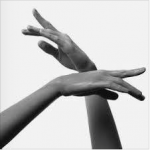 Someone once said about a very talented person, “He has many talents but one: the talent of using his talents.” There is much insight in this remark. It is not the talent, abilities, skills, intelligence, nor experience you have that matters. It is the ability to put it all together. And that takes discipline.
Someone once said about a very talented person, “He has many talents but one: the talent of using his talents.” There is much insight in this remark. It is not the talent, abilities, skills, intelligence, nor experience you have that matters. It is the ability to put it all together. And that takes discipline.
We can see that there are many talented and successful people in the world. Some of them build and build. Some of them self-destruct over time. And it is so sad when that happens. Of course, we are prone to think, “How could they have been saved?”
Maybe a better question is, “What was missing?” Or, “What makes the difference between those to build over time, and those who fall apart?”
All of these people began with a large degree of discipline in their art. No matter how talented you are, there is work to do. But then, after that, there is even more work to do. And that is the history of artists. Unlike celebrity, in the arts you never make it. There is always a next step, a new vision, a new place to go, something new to learn, new challenges to conquer.
What is discipline? Many of us have the wrong impression because the word was used in some schools to mean punishment for bad behavior. But the real thing is the factor in how we are able to go well beyond our current capabilities, talents, skills, and knowledge. Discipline is the central way to put into practice experiential learning we might need to be able to accomplish goals that we care about.
Much of the time, discipline involves doing things we might not like doing. Some people think that discipline is forcing yourself into doing these things. Willpower, manipulation, and intimidate yourself into “good behavior” never works for very long. It is not sustainable. You can’t build an orientation of true disciple that way. Yet, the advice many give us is to do just that.
In our approach to the creative process, we work with a very different principle to create discipline. It is the dynamic relationship between the primary choice, which is the goal you are working toward, and the series of secondary choices, or actions, that are needed if you are to accomplish your goal. This is technical, on the one hand, and orientational, on the other. The technical aspect is the strategic development of the process by which you will create your goal. This means that you will understand the relation between the primary choice and the secondary choices, which give you the most solid reason to take the actions you take: not because you like these actions (often you don’t,) but because this is the path that will enable you to create to result you want.
About orientation, discipline itself has an overall context in which it is always seen and understood as a system of choices. Choice always means you can do it or not. This is an important insight. If you are forcing yourself into action you don’t want to take, that is not out of real choice, but out of the pressure you are putting on yourself. The truth is that you can take this action or not. If it were not for the primary choice, you would not take it at all.
There is only ONE reason you choose to take the action, and that is because there is a higher order choice it supports. In this orientation, you never feel like you are giving up something, or making trade-offs. There is no resentment about what you are doing because the reason you are doing whatever it is in support of your goal is crystal clear. Yet, because you are not putting the typical emotional strain and resentments people often have when doing things they do not like to do, you are free to exercise your system of choices strategically and effectively.
That is the key to discipline, on the project to project level, and the discipline of discipline, on the creator level.
